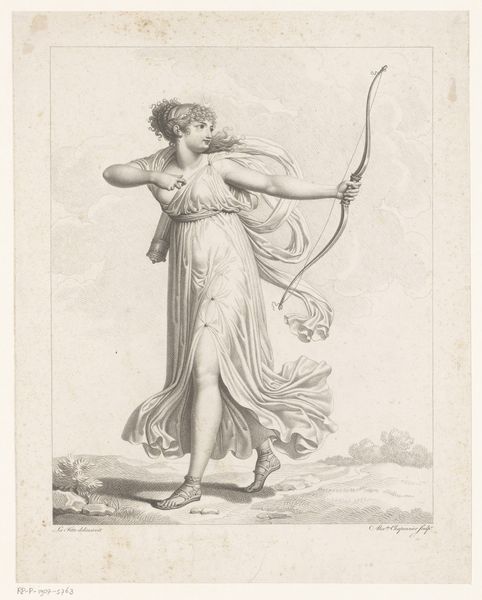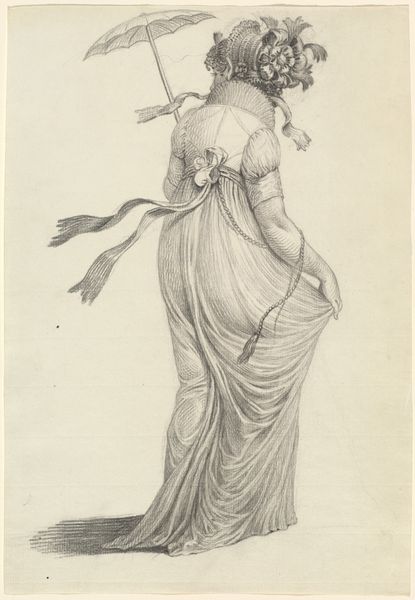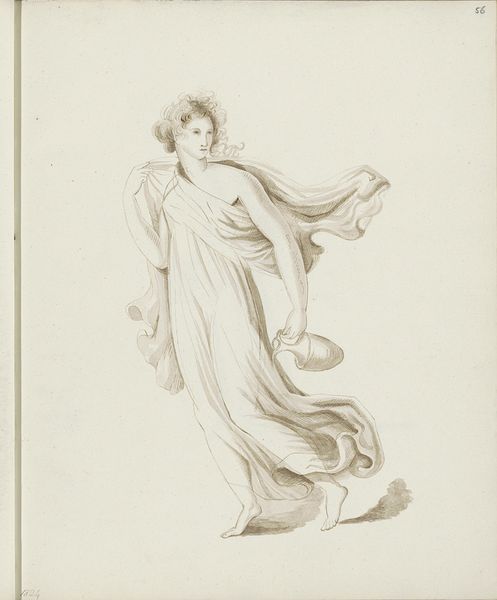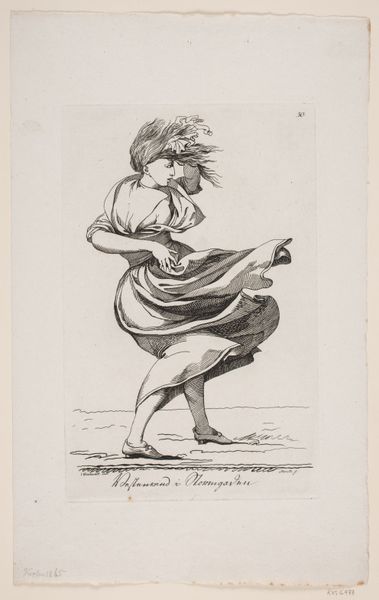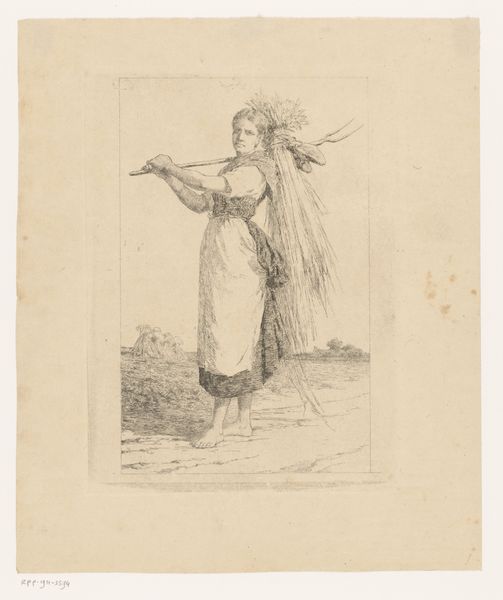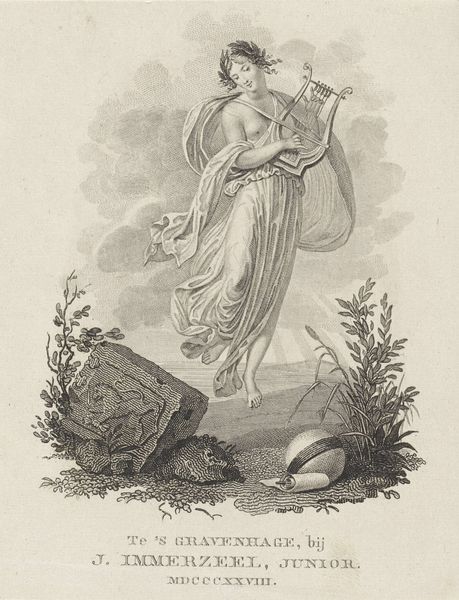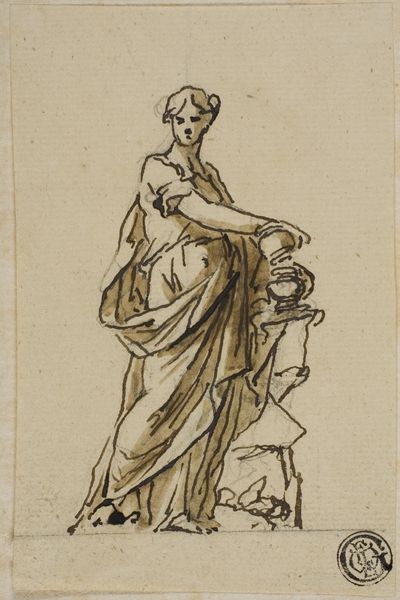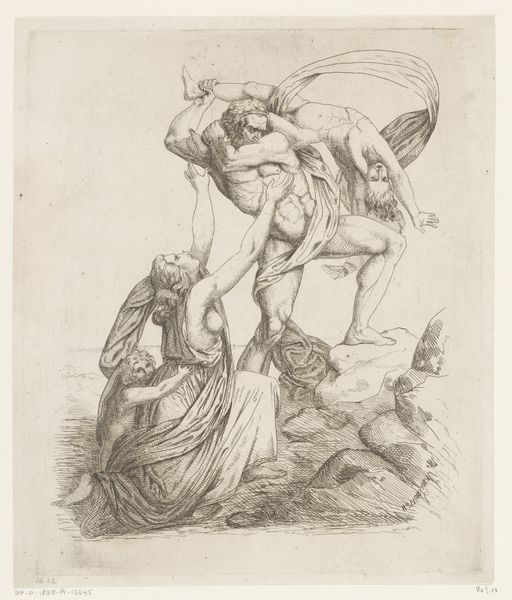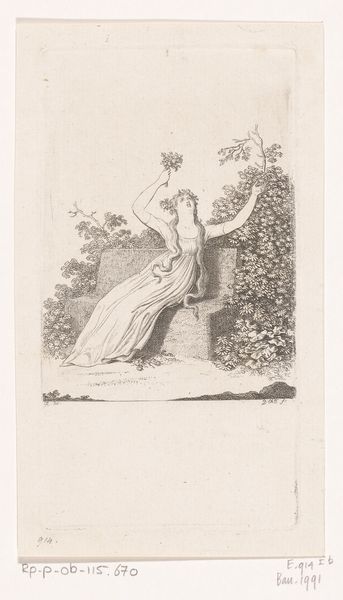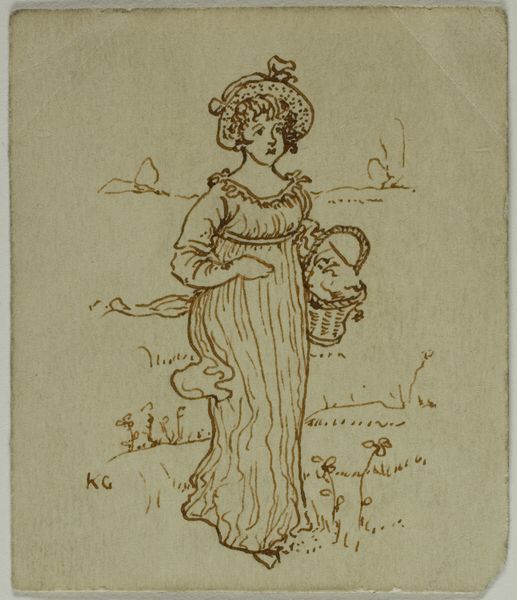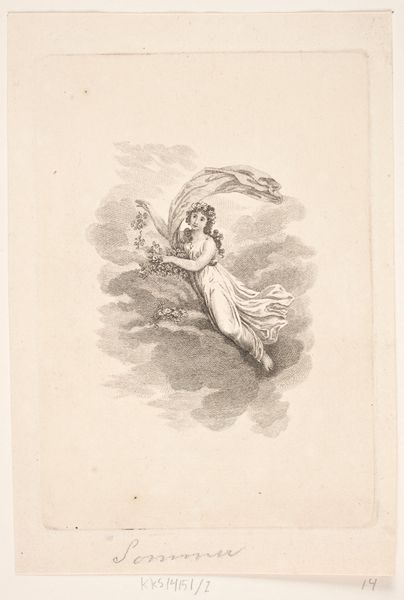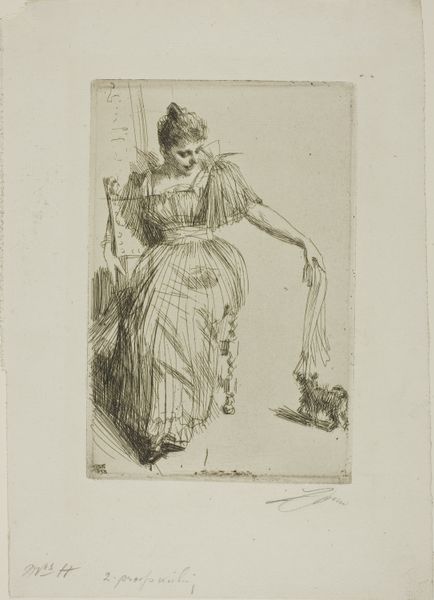
drawing, paper, ink, pencil, chalk, graphite
#
drawing
#
pencil sketch
#
classical-realism
#
figuration
#
paper
#
ink
#
pencil drawing
#
romanticism
#
pencil
#
chalk
#
graphite
#
portrait drawing
#
academic-art
Dimensions: 325 × 253 mm
Copyright: Public Domain
Editor: This is "Young Woman Bearing Flowers," a drawing from 1812 by Samuel Lane, rendered in pencil, chalk, graphite, and ink on paper. I’m struck by the flowing drapery and her idealized form, it feels very neoclassical. What are your thoughts when you look at it? Curator: I’m drawn to consider the material reality behind this idealized representation. The choice of pencil, chalk, graphite and ink, common and relatively inexpensive materials at the time, reveals a focus on accessibility and potentially wider consumption beyond the aristocratic elite who typically commissioned portraits in oil. What kind of labor went into producing the paper itself? And who would have been consuming images like this and how would they use it? Editor: That’s interesting; I hadn't considered the paper's own production! What’s significant about the subject herself in relation to material concerns? Curator: The flowers she bears become interesting in that light. Are they symbols of aristocratic leisure – greenhouse rarities? Or, given the historical context of shifting social structures and nascent capitalism, do they perhaps hint at emerging floral markets and a new type of consumption available to a broader segment of society? Note also the style of her sandal. Its sculptural elements—their production may relate to local crafting networks, small scale workshops versus emerging factories. These details point us toward thinking of representation less as simply imitation and more as something entangled in a web of material culture. Editor: I see. So it's not just about what's depicted, but the materials and processes tell a story about consumption and labor too. Curator: Precisely. And even access to art making was a material question of economy and available means. Editor: This definitely gives me a lot more to think about beyond just the surface-level image of beauty. Curator: Exactly! Thinking about how art is MADE, not just what it represents, opens up entirely new perspectives.
Comments
No comments
Be the first to comment and join the conversation on the ultimate creative platform.
